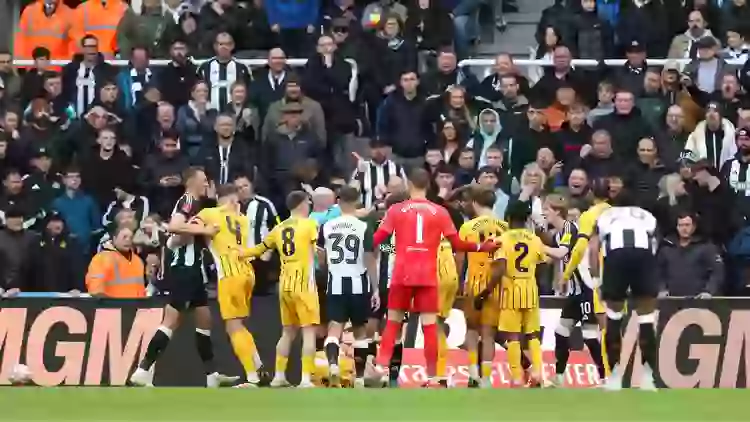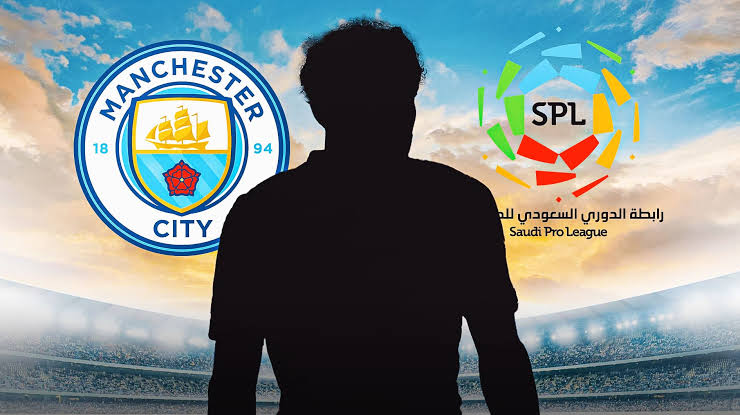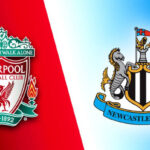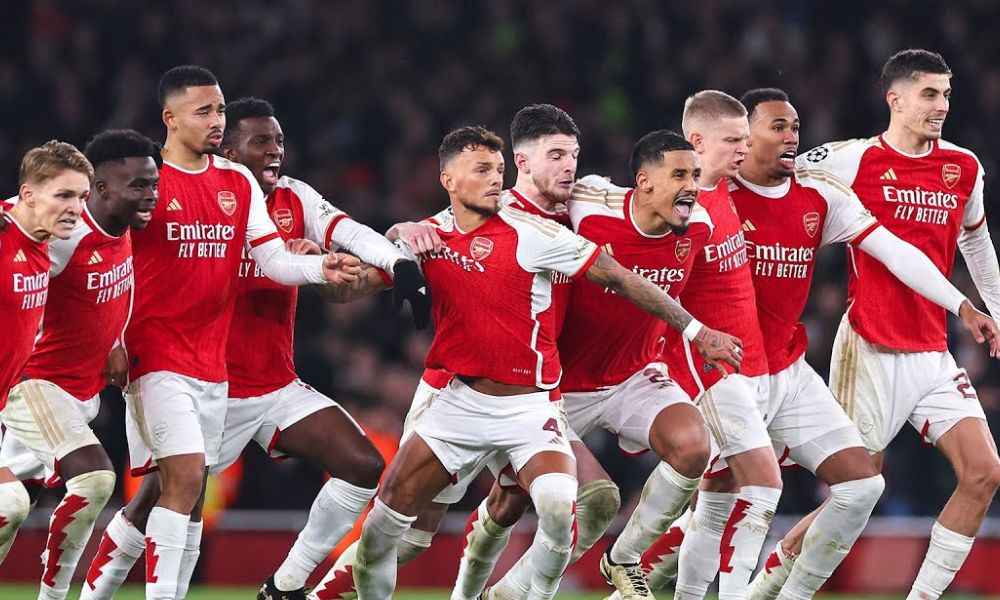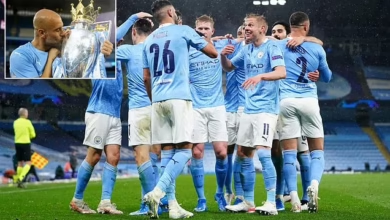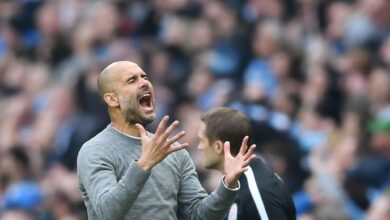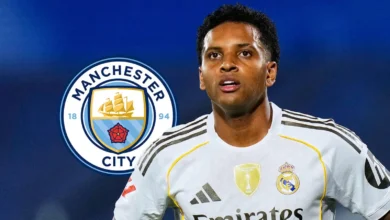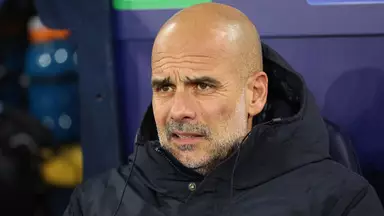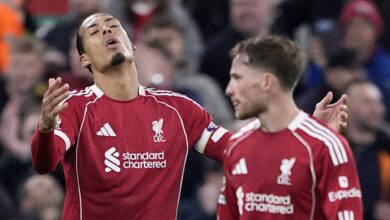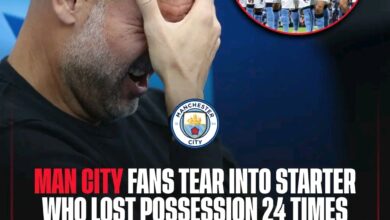Virgil van Dijk Reveals Impact of Anthony Gordon’s Red Card Challenge: A Comprehensive Analysis of the Controversial Inciden

The Premier League witnessed one of its most controversial moments of the early 2025 season when Newcastle United’s Anthony Gordon was shown a red card for a dangerous tackle on Liverpool captain Virgil van Dijk during their Monday night clash at St. James’ Park. What began as an electric atmosphere filled with hope for the home side quickly transformed into a nightmare scenario that would have lasting implications for both clubs involved.
The incident, which occurred on the stroke of half-time, not only changed the complexion of the match but also provided a stark visual reminder of the physical dangers inherent in professional football. Van Dijk’s decision to reveal the extent of the damage done by Gordon’s challenge – showing long stud marks scraped down the back of his calf – brought into sharp focus the fine line between competitive aggression and dangerous play that defines modern football.
Eddie Howe’s Newcastle United entered this fixture with genuine optimism, despite facing the reigning Premier League champions. The Newcastle manager had made a specific appeal to the home supporters in the build-up to create an “electric” atmosphere, and the passionate Geordie faithful responded magnificently. St. James’ Park was transformed into a cauldron of noise and expectation, with over 50,000 voices creating the kind of intimidating environment that has historically troubled visiting teams.
The early stages of the match suggested that Howe’s tactical preparation and motivational messaging had hit the mark perfectly. Newcastle emerged from the tunnel with an intensity and physicality that immediately put Liverpool on the back foot. The home side’s approach was clear from the opening whistle – they would not be overawed by Liverpool’s status as champions and would match them in every department, particularly in the physical battles across the pitch.
Anthony Gordon, deployed through the middle in place of the absent Alexander Isak, epitomized Newcastle’s aggressive approach. The striker, known for his pace and direct running, was clearly instructed to press Liverpool’s defense relentlessly and disrupt their rhythm whenever possible. His early performances in the match demonstrated exactly the kind of high-energy, combative display that had endeared him to the Newcastle faithful since his arrival from Everton.
The first half showcased Gordon at his most effective, creating a series of dangerous opportunities that had the home crowd on their feet. His movement in the final third was intelligent and purposeful, consistently finding pockets of space between Liverpool’s defensive lines. The striker’s pace caused particular problems for Liverpool’s usually composed backline, with his direct running forcing the visitors into several last-ditch defensive interventions.
Gordon’s closest effort came when he met a precisely delivered cross from Harvey Barnes, directing his header goalward only to see it clear the crossbar by the narrowest of margins. The collective groan from the Newcastle supporters reflected both their disappointment and their growing belief that this could be their day. The striker had generated three consecutive good chances, each one building the tension and expectation within St. James’ Park.
However, as the first half progressed, Liverpool began to assert their quality and experience. Arne Slot’s side, despite being second-best in the opening exchanges, demonstrated the composure and technical ability that had made them champions. Their patient approach to breaking down Newcastle’s defensive structure eventually paid dividends when Ryan Gravenberch found space outside the penalty area.
Gravenberch’s goal arrived at a pivotal moment in the contest, just as Newcastle’s early intensity was beginning to wane. The Dutch midfielder’s strike from outside the box demonstrated both technical excellence and a degree of fortune, as the ball clipped the post before beating Nick Pope at his near side. The goal was a reminder of Liverpool’s ability to create moments of quality even when not at their absolute best.
For Newcastle, conceding the opening goal represented a significant psychological blow. After dominating the early proceedings and creating several presentable opportunities, finding themselves behind would have been particularly frustrating. The goal seemed to take some of the sting out of Newcastle’s momentum, with Liverpool’s experience in managing such situations becoming increasingly evident.
The timing of Liverpool’s breakthrough also placed additional pressure on Newcastle’s approach to the remainder of the half. With the clock ticking toward the break, there was an understandable urgency from the home side to restore parity before the teams retreated to their respective dressing rooms. This pressure would ultimately contribute to the incident that would define the match.
On the stroke of half-time, with Newcastle desperately seeking an equalizer, Anthony Gordon made a decision that would haunt both himself and his team for the remainder of the match. As Liverpool attempted to play out from the back, Gordon spotted an opportunity to press Virgil van Dijk and potentially win possession in a dangerous area.
The striker’s intentions were clearly to inject some aggression and intensity back into Newcastle’s play, recognizing that his team needed a spark to reignite their first-half dominance. However, Gordon’s execution of this aggressive press would prove catastrophically misjudged. From his starting position, the striker was simply too far away from van Dijk to make a clean, legal challenge for the ball.
Despite this disadvantage, Gordon committed fully to the press, sprinting toward the Liverpool captain with the kind of determination that had characterized his performance throughout the half. Unfortunately, this commitment would prove to be his downfall, as he arrived at the challenge significantly late and with too much force.
The physical evidence of Gordon’s late tackle was starkly revealed when van Dijk showed the damage done to the back of his calf. Long stud marks were clearly visible, scraped down from his calf toward his Achilles tendon, providing undeniable proof of the severity of the challenge. The visual evidence was particularly damning, showing not just the point of initial contact but the extended scraping motion as Gordon’s studs dragged down van Dijk’s leg.
Van Dijk’s decision to reveal this damage was significant for several reasons. Firstly, it provided clear evidence of the dangerous nature of the challenge, supporting the referee’s eventual decision to upgrade the initial yellow card to a red. Secondly, it highlighted the Dutch defender’s professionalism in continuing to play despite the evident discomfort and potential injury caused by the incident.
The scraping nature of the contact was particularly concerning from a safety perspective. While football is inherently a contact sport, challenges that involve extended contact with studs pose significant risks of serious injury. The fact that van Dijk was able to continue playing was perhaps fortunate, as such challenges can easily result in cuts, bruises, or more serious soft tissue damage.
The initial decision by referee Simon Hooper to show Gordon a yellow card reflected the real-time difficulty of assessing the severity of such challenges. From Hooper’s position on the field, the full extent of the contact and the dangerous nature of the tackle may not have been immediately apparent. This is precisely the kind of situation where Video Assistant Referee (VAR) technology proves its worth in modern football.
The call to review the decision came promptly, with Hooper being directed to the pitchside monitor to examine the incident in greater detail. The review process allowed the referee to see multiple angles of the challenge, including slow-motion replays that clearly showed the late timing of Gordon’s arrival and the extensive contact between his studs and van Dijk’s leg.
The deliberation process at the monitor was thorough, with Hooper examining the footage in both real-time and slow motion. This comprehensive review approach ensured that the decision was based on all available evidence rather than a single viewing angle. The eventual decision to upgrade the yellow card to a red for serious foul play reflected the clear evidence of dangerous play.
Gordon’s dismissal had immediate and far-reaching consequences for Newcastle United. Being reduced to ten men against the reigning Premier League champions would have been challenging under any circumstances, but facing Liverpool with their technical superiority and tactical flexibility made the task almost insurmountable.
The psychological impact on Newcastle’s players was evident as they trudged off for the half-time break. Having dominated much of the first half and created several good opportunities, they now faced the prospect of playing the entire second half a man down. The contrast between their early optimism and the stark reality of their situation represented a dramatic shift in the match’s narrative.
For Liverpool, Gordon’s red card represented an unexpected advantage that they would be expected to capitalize on. Arne Slot’s tactical acumen and his team’s experience in such situations made them overwhelming favorites to secure all three points from their advantageous position.
The second half unfolded largely as expected, with Liverpool exercising increasing control over the proceedings. Newcastle, despite their best efforts and the continued support of their passionate fans, struggled to create meaningful attacking opportunities while maintaining defensive stability with just ten men.
Eddie Howe’s tactical adjustments during the interval were focused on damage limitation rather than attacking ambition. The Newcastle manager was forced to reshape his team’s structure to compensate for Gordon’s absence, inevitably sacrificing some attacking threat in favor of defensive solidity. However, against a team of Liverpool’s quality, even the most well-organized defensive display can be undone by individual moments of brilliance.
Liverpool’s patient approach to breaking dow
